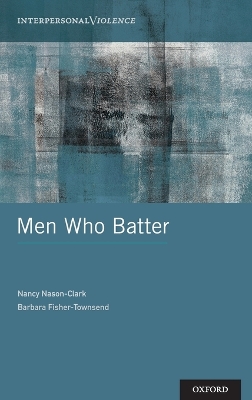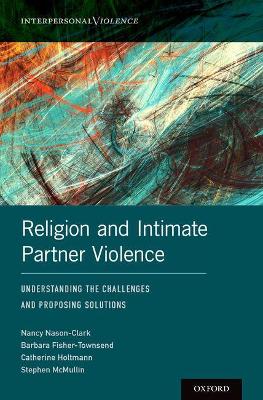Interpersonal Violence
2 total works
Men who act abusively have their own story to tell, a journey that often begins in childhood, ripens in their teenage years, and takes them down paths they were hoping to never travel. Men Who Batter recounts the journey from the point of view of the men themselves.
The men's accounts of their lives are told within a broader framework of the agency where they have attended groups, and the regional coordinated community response to domestic violence, which includes the criminal justice workers (e.g., probation, parole, judges), and those who staff shelters and work in advocacy. Based on interview data with this wide array of professionals, we are able to examine how one community, in one western state, responds to men who batter.
Interwoven with this rich and colorful portrayal of the journey of abusive men, we bring twenty years of fieldwork with survivors and those who walk alongside them as they seek safety, healing and wholeness for themselves and their children. Women who have been victimized by the men they love often hold out hope that, if only their abusers could be held accountable and receive intervention, the violence will stop and their own lives will improve dramatically as a result. While the main purpose of Men Who Batter is to highlight the stories of men, told from their personal point of view, it is countered by reality checks from their own case files and those professionals who have worked with them. And finally, interspersed within its pages is another theme: finding religious faith or spiritual activity in unlikely places.
The men's accounts of their lives are told within a broader framework of the agency where they have attended groups, and the regional coordinated community response to domestic violence, which includes the criminal justice workers (e.g., probation, parole, judges), and those who staff shelters and work in advocacy. Based on interview data with this wide array of professionals, we are able to examine how one community, in one western state, responds to men who batter.
Interwoven with this rich and colorful portrayal of the journey of abusive men, we bring twenty years of fieldwork with survivors and those who walk alongside them as they seek safety, healing and wholeness for themselves and their children. Women who have been victimized by the men they love often hold out hope that, if only their abusers could be held accountable and receive intervention, the violence will stop and their own lives will improve dramatically as a result. While the main purpose of Men Who Batter is to highlight the stories of men, told from their personal point of view, it is countered by reality checks from their own case files and those professionals who have worked with them. And finally, interspersed within its pages is another theme: finding religious faith or spiritual activity in unlikely places.
Religion and Intimate Partner Violence
by Nancy Nason-Clark, Barbara Fisher-Townsend, Catherine Holtmann, and Stephen McMullin
Published 19 October 2017
Intimate partner violence is a complex, ugly, fear-inducing reality for large numbers of women around the world. When violence exists in a relationship, safety is compromised, shame abounds, and peace evaporates. Violence is learned behavior and it flourishes most when it is ignored, minimized, or misunderstood. When it strikes the homes of deeply religious women, they are: more vulnerable; more likely to believe that their abusive partners can, and will, change;
less likely to leave a violent home, temporarily or forever; often reluctant to seek outside sources of assistance; and frequently disappointed by the response of the religious leader to their call for help. These women often believe they are called by God to endure the suffering, to forgive (and to
keep on forgiving) their abuser, and to fulfill their marital vows until death do us part. Concurrently, many batterers employ explicitly religious language to justify the violence towards their partners, and sometime they manipulate spiritual leaders who try to offer them help.
Religion and Intimate Partner Violence seeks to navigate the relatively unchartered waters of intimate partner violence in families of deep faith. The program of research on which it is based spans over twenty-five years, and includes a wide variety of specific studies involving religious leaders, congregations, battered women, men in batterer intervention programs, and the army of workers who assist families impacted by abuse, including criminal justice workers, therapeutic staff,
advocacy workers, and religious leaders. The authors provide a rich and colorful portrayal of the intersection of intimate partner violence and religious beliefs and practices that inform and interweave throughout daily life. Such a focus on lived religion enables readers to isolate, examine, and evaluate ways
in which religion both augments and thwarts the journey towards justice, accountability, healing and wholeness for women and men caught in the web of intimate partner violence.
less likely to leave a violent home, temporarily or forever; often reluctant to seek outside sources of assistance; and frequently disappointed by the response of the religious leader to their call for help. These women often believe they are called by God to endure the suffering, to forgive (and to
keep on forgiving) their abuser, and to fulfill their marital vows until death do us part. Concurrently, many batterers employ explicitly religious language to justify the violence towards their partners, and sometime they manipulate spiritual leaders who try to offer them help.
Religion and Intimate Partner Violence seeks to navigate the relatively unchartered waters of intimate partner violence in families of deep faith. The program of research on which it is based spans over twenty-five years, and includes a wide variety of specific studies involving religious leaders, congregations, battered women, men in batterer intervention programs, and the army of workers who assist families impacted by abuse, including criminal justice workers, therapeutic staff,
advocacy workers, and religious leaders. The authors provide a rich and colorful portrayal of the intersection of intimate partner violence and religious beliefs and practices that inform and interweave throughout daily life. Such a focus on lived religion enables readers to isolate, examine, and evaluate ways
in which religion both augments and thwarts the journey towards justice, accountability, healing and wholeness for women and men caught in the web of intimate partner violence.

